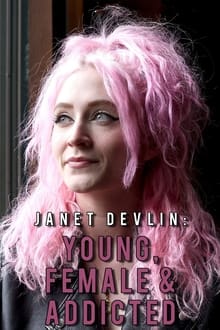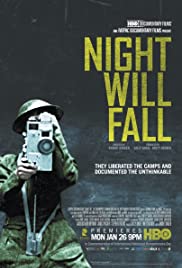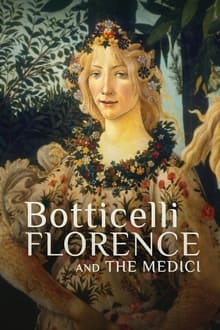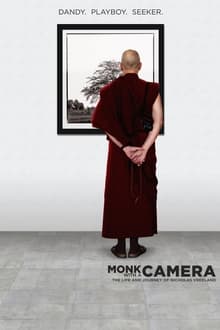
Not Available
You May Also Like

Amidst the protests for freedom in Hong Kong, a domestic worker plans to break free and run wild, towards her dreams of independence, romantic love, and true motherhood.

From a chance meeting to a tragic fallout, Malcolm X and Muhammad Ali’s extraordinary bond cracks under the weight of distrust and shifting ideals.

Bob Hoover tells his own story and shares, with his trademark charm, the hard earned wisdom of a life spent pushing the edge of the envelope while contributing to aviation’s many developments.

Following former X-Factor star Janet Devlin as she embarks on a journey to understand the impact her alcohol addiction had on those closest to her and how problematic drinking is affecting other young women in Northern Ireland.

Laura Ingalls Wilder: Prairie to Page presents an unvarnished look at the unlikely author whose autobiographical fiction helped shape American ideas of the frontier and self-reliance. A Midwestern farm woman who published her first novel at age 65, Laura Ingalls Wilder transformed her frontier childhood into the best-selling “Little House” series. The documentary delves into the legacy of the iconic pioneer as well as the way she transformed her early life into enduring legend, a process that involved a little-known collaboration with her daughter Rose.

The deep northern forests of Michigan’s Upper Peninsula are home to small villages of Finnish Americans—communities carved out from the forest where Finnish language, cultural worldview, and traditional arts remain crucial to social life more than a century after immigration. In this beautiful and rugged north country, the extraordinary, ordinary descendants of Finnish immigrants still eke out modest lives to this day on old farmsteads, working with the resources they have available to them, showing their creativity and ingenuity in simply getting by and making do, and living in ways not dissimilar from their ancestors who migrated three or four generations ago.

When the jet pack took its first flight in the 1960s, it was loud, difficult to pilot, and could stay in the air for about 30 seconds. Over 50 years later, not much has changed. But visionary engineers are hard at work to make them quieter, safer, and more practical.

To mark the recent thirtieth anniversary of Sergio Leone’s death, this documentary sets out to pay tribute to one of the great legends of world cinema. The singular artistic vision of Sergio Leone has transcended national borders, creating the Spaghetti Western genre and transforming the international cinematic panorama forever with his innovative stylistic and narrative solutions, which have now become part of the language of the movies. The film, which is enriched with precious archive footage from the Cineteca di Bologna, including rare audio recordings and film clips shot behind the scenes, sees for the first time the direct participation of the Leone family and has interviews both with Leone’s longtime collaborators and with icons of Hollywood who have been profoundly influenced by his work.

When Allied forces liberated the Nazi concentration camps in 1944-45, their terrible discoveries were recorded by army and newsreel cameramen, revealing for the first time the full horror of what had happened. Making use of British, Soviet and American footage, the Ministry of Information’s Sidney Bernstein (later founder of Granada Television) aimed to create a documentary that would provide lasting, undeniable evidence of the Nazis’ unspeakable crimes. He commissioned a wealth of British talent, including editor Stewart McAllister, writer and future cabinet minister Richard Crossman – and, as treatment advisor, his friend Alfred Hitchcock. Yet, despite initial support from the British and US Governments, the film was shelved, and only now, 70 years on, has it been restored and completed by Imperial War Museums under its original title “German Concentration Camps Factual Survey”.

Documentary on the art and culture of Florence in 15th century Tuscany and, in particular, the work of Eary Ranaissance painter Sandro Botticelli (1445-1501).

Miguel makes the journey that his grandfather cannot make because he is locked up by his own family. The mission is very simple, go to a funeral and leave an army jacket on the grave of an old man, a friend of his grandfather. Miguel, accompanied by Lola and Guillermo, leaves that island of cement that is the Nazareth neighborhood. He wanders the outskirts of Valencia, looking for a cemetery and faces a deserted city.

Nicholas Vreeland walked away from a worldly life of privilege to become a Tibetan Buddhist monk. Grandson of legendary Vogue editor, Diana Vreeland, and trained by Irving Penn to become a photographer, Nicholas’ life changed drastically upon meeting a Tibetan master, one of the teachers of the Dalai Lama. Soon thereafter, he gave up his glamorous life to live in a monastery in India, where he studied Buddhism for fourteen years. In an ironic twist of fate, Nicholas went back to photography to help his fellow monks rebuild their monastery. Recently, the Dalai Lama appointed Nicholas as Abbot of the monastery, making him the first Westerner in Tibetan Buddhist history, to attain such a highly regarded position.